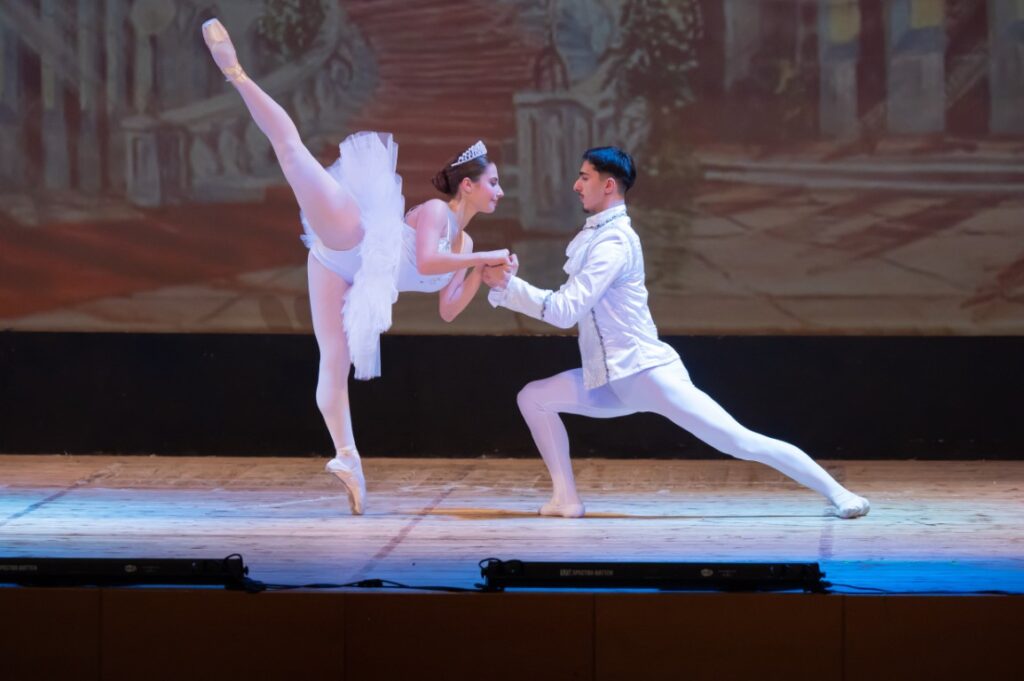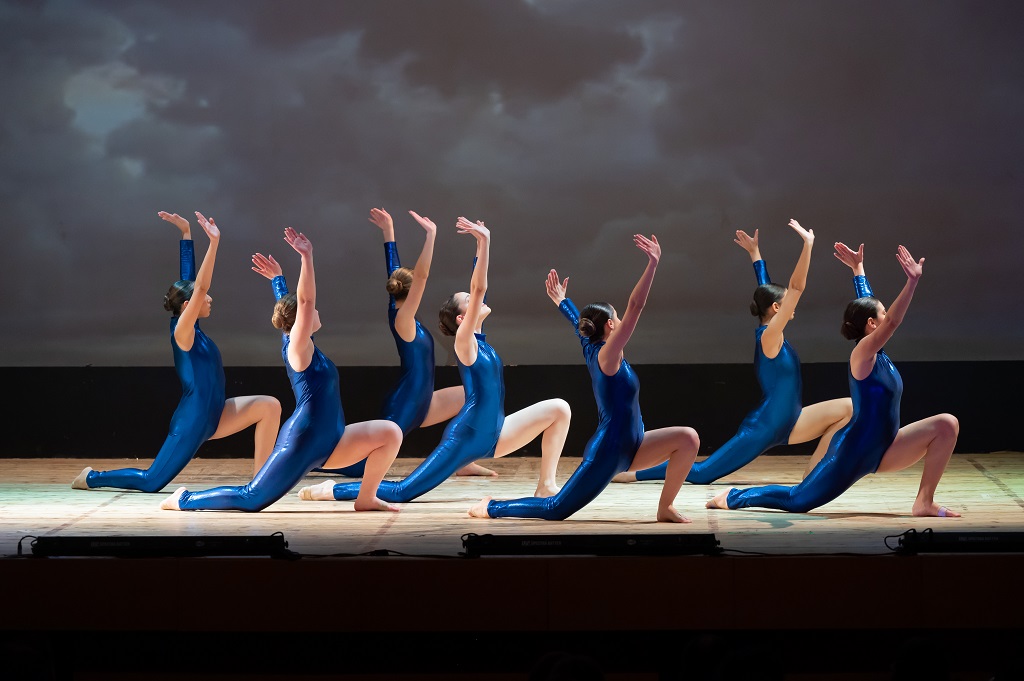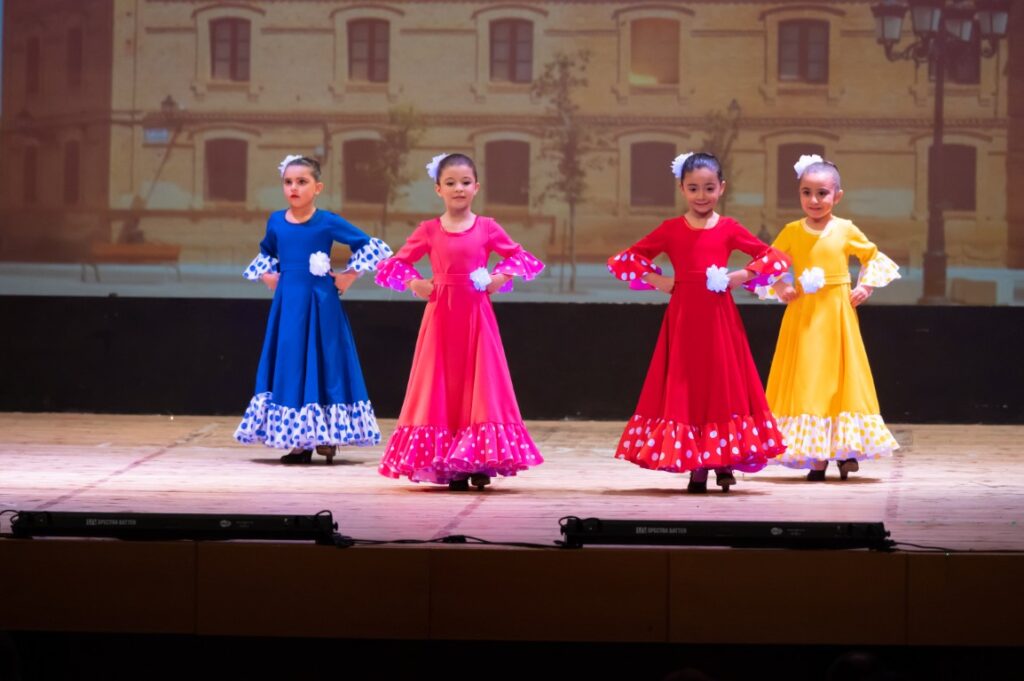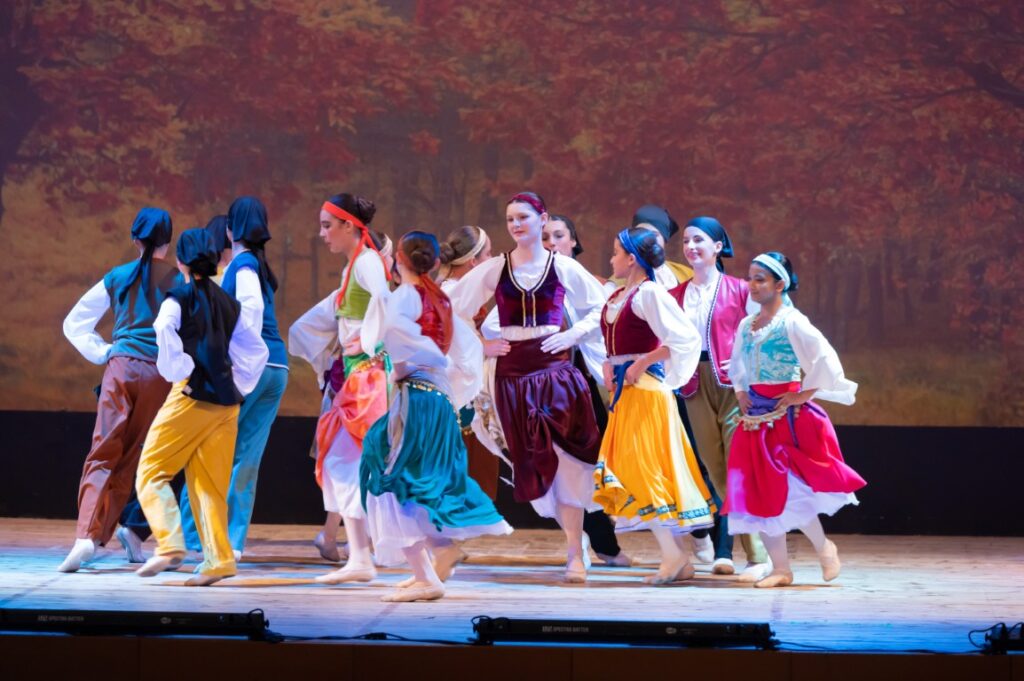Courses at the Dance Academy

The Dance Academy offers the following dance disciplines:
- Classical Ballet; The Royal Academy of Dancing at graded and vocational graded levels
- Modern/Jazz Dance; The Imperial Society of Dance Teachers
- Spanish Dance; The Spanish Dance Society
- Contemporary Dance
- Pilates/Yoga
- Fitness Training
Classical Ballet

The Dance Academy enters students for the Royal Academy Of Dance where they receive a comprehensive, well-structured and relevant education in Classical Ballet.
The Royal Academy Of Dance offers two examination syllabi in Classical Ballet; Graded Examination In Dance and Vocational Graded Examination In Dance.
The Graded Examination In Dance syllabus consists of three dance disciplines; Classical Ballet, Free Movement and Character. Classical Ballet is the foundation and the most important part of the syllabus. Free Movement has been influenced by and incorporates movements in common with other dance styles, such as Natural Movement, Contemporary and Classical Greek Dance. Character is the theatrical presentation of national dance using ethnic dance and music. The three styles, Hungarian, Russian and Polish were selected because of their historic importance in the development of the 19th century’s full-length ballets. Free Movement and Character have been included to supplement and assist the training of Classical Ballet, thus providing a broadly-based dance education.
There are nine grades of examination, numbered progressively in order of complexity, from Primary to Grade Eight Award. Students progress through the Graded Syllabi and at a certain point transfer to the Vocational Graded Syllabus. Here the study of ballet is highly focused and relevant for students wishing to study seriously with a view to pursue a performing career or dance-related subjects. It is at this point that students commence the study of Pointe work – the culmination of the female ballet dancers’ technique.
The Graded Examination establishes a means of acquisition of technical, musical and performance skills in Classical Ballet and related dance disciplines. They provide children with an opportunity of experiencing various dance disciplines, encouraging self-confidence and self-esteem, while developing a general appreciation of music.
The Vocational Graded Syllabus is designed for the particular student who wishes to pursue a career in professional dancing. It requires the student to have specific physical qualities that do not put stress on the natural physique. There are five vocational graded classes, which require an in-depth study of a period of two or more years for each standard.
- RAD Entry Level Award in Graded Examination in Dance: Primary in Dance (VRQ)
- RAD Level 1 Award in Graded Examination in Dance: Grade 1 (Ballet)
- RAD Level 1 Award in Solo Performance in Dance: Grade 1 (OG)
- RAD Level 1 Award in Graded Examination in Dance: Grade 2 (Ballet)
- RAD Level 1 Award in Solo Performance in Dance: Grade 2 (OG)
- RAD Level 1 Award in Graded Examination in Dance: Grade 3 (Ballet)
- RAD Level 1 Award in Solo Performance in Dance: Grade 3 (OG)
- RAD Level 2 Award in Graded Examination in Dance: Grade 4 (Ballet)
- RAD Level 2 Award in Solo Performance in Dance: Grade 4 (OG)
- RAD Level 2 Award in Graded Examination in Dance: Grade 5 (Ballet)
- RAD Level 2 Award in Solo Performance in Dance: Grade 5 (OG)
- RAD Level 3 Certificate in Graded Examination in Dance: Grade 6 (Ballet)
- RAD Level 3 Certificate in Graded Examination in Dance: Grade 7 (Ballet)
- RAD Level 3 Certificate in Graded Examination in Dance: Grade 8 (Ballet)
- RAD Level 2 Certificate in Vocational Graded Examination in Dance: Intermediate Foundation (Ballet)
- RAD Level 3 Certificate in Vocational Graded Examination in Dance: Intermediate (Ballet)
- RAD Level 3 Certificate in Vocational Graded Examination in Dance: Advanced Foundation (Ballet)
Modern/Jazz Dance

The Dance Academy can proudly boast of entering students for both Graded and Vocational Graded dance examinations of the Imperial Society Of Teachers Of Dance. (I.S.T.D.)
As students progress through the different levels, they acquire various skills. They learn correct posture and technique, and also appreciate varying musical styles and their interpretation. Students develop spatial awareness and self-expression, as well as a sense of performance. International qualifications of the I.S.T.D. ensure that high standards are achieved and maintained, through a healthy and safe environment. Qualifications achieved through the Society are recognised worldwide.
The Graded Syllabus includes Primary up to Grade Six. Jazz awards have three levels which all focus on performance and technique. The Vocational classes include Intermediate Foundation uptil Advanced Two. These levels are considered as professional examinations and each level requires two to three years of preparation.
- ISTD Level 1 Award in Graded Examination in Dance: Grade 1 (Modern Theatre Dance)
- ISTD Level 1 Award in Graded Examination in Dance: Grade 2 (Modern Theatre Dance)
- ISTD Level 1 Award in Graded Examination in Dance: Grade 3 (Modern Theatre Dance)
- ISTD Level 2 Award in Graded Examination in Dance: Grade 4 (Modern Theatre Dance)
- ISTD Level 2 Award in Graded Examination in Dance: Grade 5 (Modern Theatre Dance)
- ISTD Level 3 Certificate in Graded Examination in Dance: Grade 6 (Modern Theatre Dance)
- ISTD Level 2 Certificate in Vocational Graded Examination in Dance: Intermediate Foundation (Modern Theatre Dance)
- ISTD Level 3 Certificate in Vocational Graded Examination in Dance: Intermediate (Modern Theatre Dance)
Contemporary Dance

Classes for Contemporary Dance are held for student aged fourteen and over. A variety of Contemporary Dance techniques such as Graham, Limon and Alvin Ailey are studied. Contact improvisation is also tackled.
Contemporary Dance is about concepts and experimentation, with a heavy focus on the choreographic rehearsing and performing processes. The philosophies behind each technique are different but also influence each other and can be seen by the overlapping nature of Graham and Cunningham techniques, the most broadly known and taught in Contemporary Dance. It is very versatile as it can be performed to any kind of music and can be combined with other dance forms to create new and innovative works.
Spanish Dance

Dance Academy introduced Spanish Dancing five years ago and is gradually increasing in popularity. The syllabus is offered in a structured way to ensure that the art of Spanish Dancing is taught well, perusing excellence in presentation, execution and instruction.
The technique is broken down into castanet playing, steps, footwork, arm movements and various different types of turns, which are taught progressively in a series of seven graded junior levels and three senior levels, each examination culminating in the presentation of two or three dances of regional, classical or flamenco styles.
The syllabus is graded into Junior and Senior syllabus. The Junior syllabus has seven levels, each level has a study period of two years. The Senior syllabus has six levels, each level has a study period of two years.
Dance courses are validated by the Malta Qualifications Board.
- General Graded Examination In Spanish Dance – Grade 1
- General Graded Examination In Spanish Dance – Grade 2
- General Graded Examination In Spanish Dance – Grade 3
- General Graded Examination In Spanish Dance – Grade 4
- General Graded Examination In Spanish Dance – Grade 5
- General Graded Examination In Spanish Dance – Grade 6
- General Graded Examination In Spanish Dance – Grade 7
- General Graded Examination In Spanish Dance – Grade 8
Pilates/Yoga/Fitness
Freestyle Yoga/Pilates targets flexibility, core stability and strength. It is a fitness programme that incorporates deep stretch, Yoga postures and Pilates exercise. It is not a spiritual experience. The benefits that one gains from different exercise classes are as follows: stamina, fat loss, regulation of blood pressure, toning and sculpting of muscles, release of tension and depression, our body becomes more sensitive to use of fat as fuel, prevention of Osteoporosis/breast cancer, lowering of cholesterol, better posture, increase of natural body pain killers, increase of metabolism, increase of bone density and strength, improves balance and co-ordination.
Hi/Lo Impact Class, are directed towards improving stamina, co-ordination and bone health, however, still concentrating on muscular strength and endurance. The class ends with a good stretch.
Body conditioning classes concentrate on muscular power strength and stability using free weights.
Circuit Classes consist of a totally different format – a boost cross training different muscles.

